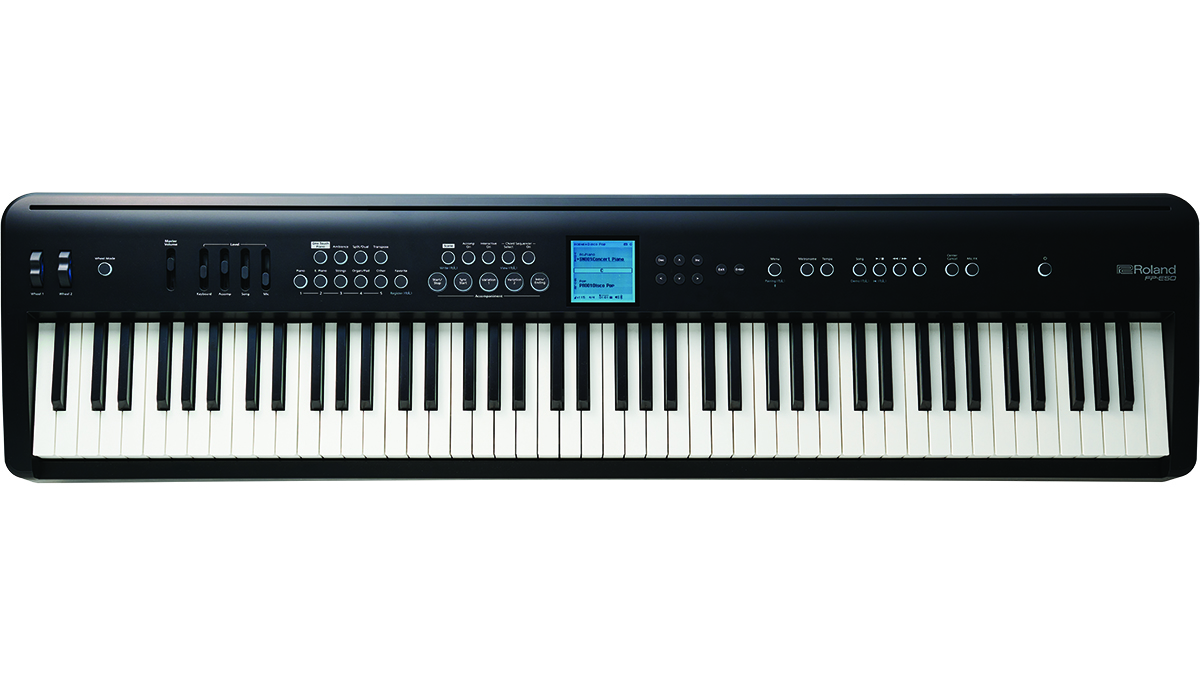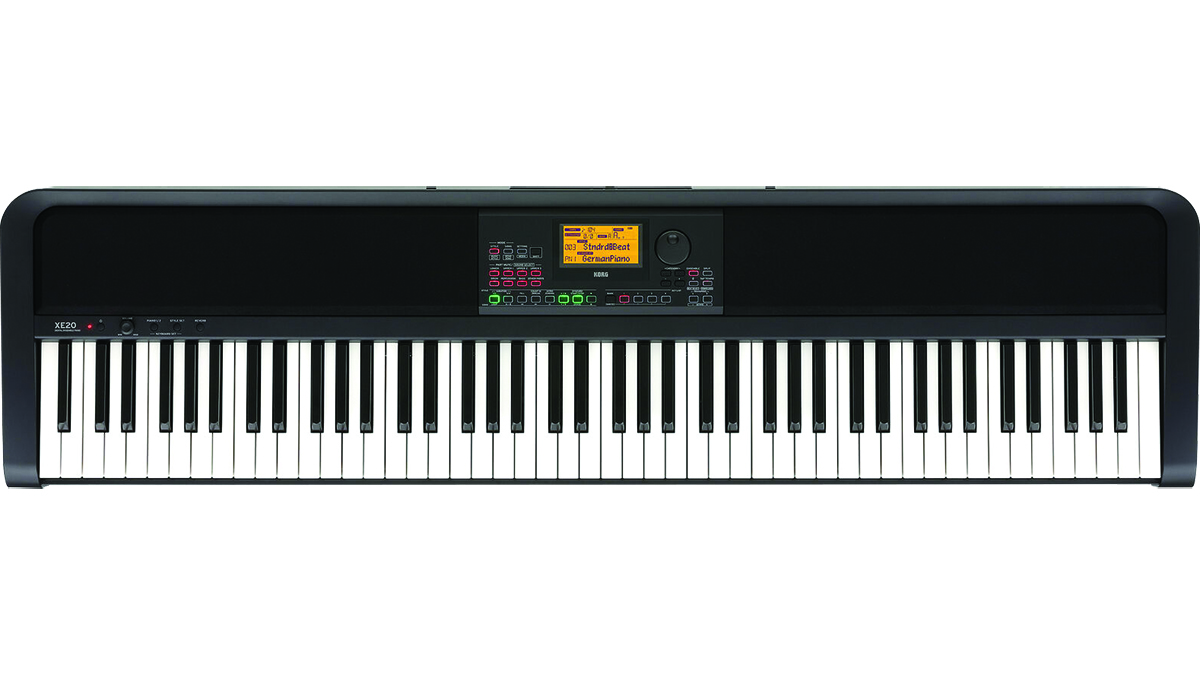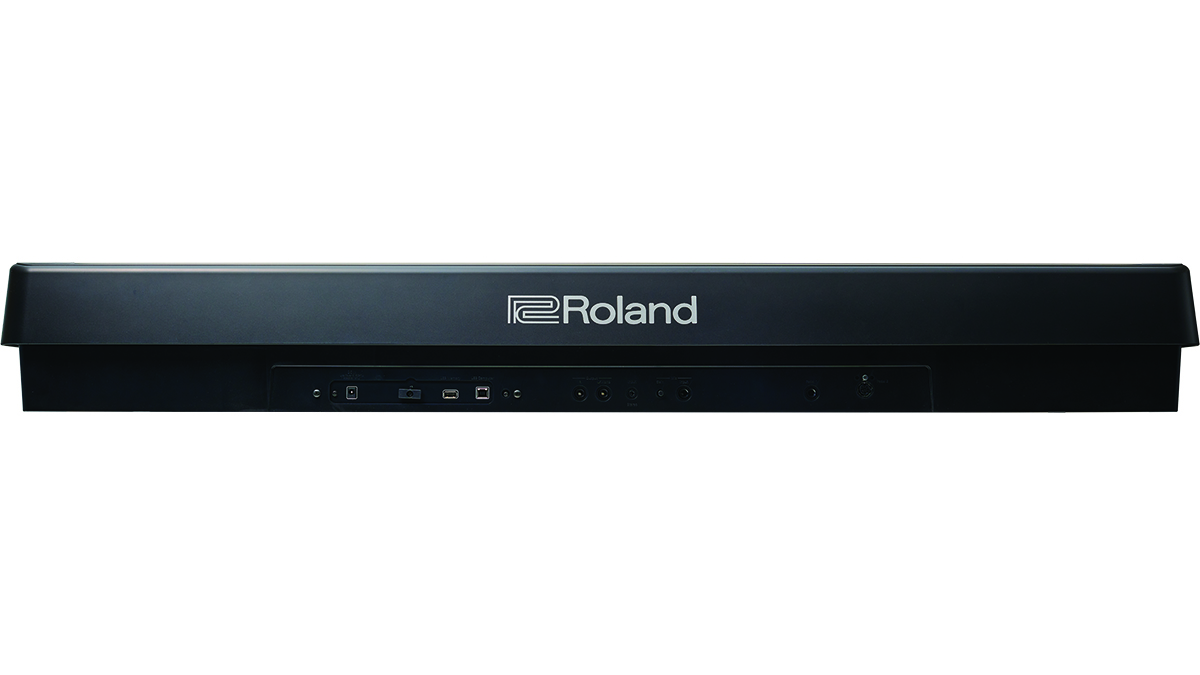MusicRadar Verdict
Maybe not the coolest keyboard in Roland’s roster, but if you value sound quality, ease-of-use and fun, it’s in a class of its own.
Pros
- +
Very playable.
- +
A wide selection of ZEN-Core synth sounds.
- +
The auto-accompaniment features are great fun.
Cons
- -
You can add more sounds and styles, but not the Model Expansion synth emulations.
- -
Should we really need to be using a flash drive to install content in 2023?
MusicRadar's got your back
Roland FP-E50: What is it?
Increasingly, manufacturers are blurring the boundaries between home keyboards, synths, digital pianos, stage pianos, arrangers and workstations, resulting in some interesting hybrids.
Roland’s FP-E50 is a case in point. On first inspection, it looks like a home digital piano but then you spot the pitch and mod wheels on the left and start to wonder. There are more buttons and sliders than you’d expect on a living room keyboard, too.
And that’s because, while the Roland FP-E50 can happily function as a home digital piano – it has a PHA-4 keybed (with Escapement and Ivory Feel, we might add), Roland’s SuperNATURAL Piano engine, built-in speakers and the obligatory music stand – it can do a few other things, too.
Take automatic accompaniment, for example. There are 177 preset styles that cover all of the expected genres, and you get handy features such as sync start, variations and intros/endings.
There’s also an interactive function; fire this up and the FP-E50 will ‘listen’ to how you’re playing and adjust the backing track to suit.
Then there’s the chord sequencer. This includes 140 preset patterns for you to jam over, and space to store 256 of your own progressions. A simple recorder enables you to capture your playing.

Roland FP-E50: Performance and verdict
The FP-E50 goes above and beyond with its additional sounds, too. Roland’s latest ZEN-Core engine is in play (the same one that’s used in the company’s high-end synths) and, as well as the expected acoustic and electric pianos, strings, organs and pads, you also get a multitude of synth tones and drum sets.

• Korg XE20
Like the FP-E50, the XE20 is a digital piano with auto-accompaniment features. You get a total of 705 sounds (including two grand piano variants) and 41 drum kits, and bonus styles can be downloaded, too.
• Casio PX-S3100
A super-svelte and portable digital piano that has the advantage of being battery-powerable. Again, there are auto-accompaniment features, while the upgraded speakers and Bluetooth audio/MIDI support keep things current.
Things are starting to get interesting, then, and if you’re deducing that the FP-E50 has a strong performance angle then you’d be right.
In fact, it even has a mic input for singing, along with auto harmony, voice transformer, vocal designer, compressor and noise suppressor effects.
You might also want to play along with tracks from your phone, in which case you can make use of the Bluetooth audio functionality (wireless MIDI is here, too) or plug in via the mini-jack input.
There’s also USB MIDI/audio, 1/4-inch output for hooking up to a larger speaker system, dual headphone jacks (one big, one small) and pedal inputs (a DP-2 damper pedal is included).
There’s a lot about the PF-E50 that feels familiar, and that’s no bad thing. The SuperNATURAL piano engine sounds as good as ever here, and the PHA-4 keyboard does a pretty good job of offering a piano-like feel. One or two of the notes on our review model did have a slightly more audible ‘click’ noise than others, but not to the point that it was offputting.
This action might feel heavy at first if you’re graduating from a home keyboard but stick with it and let it loosen up. You’ll be rewarded with a fine playing experience that allows for plenty of expression, even if it’s not quite on a par with the PHA-50 keybed that you’ll find in Roland’s more expensive pianos.
You can also tweak the sound of your piano in the designer section, adjusting the likes of lid position and string, damper, key off and cabinet resonance. Many players won’t touch this, but it’s there if you need it.
The FP-E50’s two 11-watt speakers are downward facing which, again, might take a bit of getting used to if you’re used to top-mounted ones. They’re plenty loud enough, if a little boomy if you crank them up.

In general, though, the more time you spend with this instrument, the more you find to like about it. The wealth and quality of sounds on offer is hugely impressive, and you can lose hours as you start layering them up or splitting the keyboard so that you can play one with your left hand and another with your right. It’s possible to add more, too, via the Roland Cloud (check out the boxout for more details).
Perhaps the biggest revelation (for us, anyway) are the auto-accompaniment features. Some will consider them deeply unfashionable, but for solo jamming, they’re lots of fun. The presets and multiple chord detection modes make this performance element of the PF-E50 highly configurable.
The interactive option certainly adds something, too. At times, it really does feel like you’re playing with a responsive group of musicians, though it doesn’t always take the backing quite where you want it. As with any band, you have to learn the idiosyncrasies and work with them.
The workflow is genuinely beginner-friendly. It feels like you can get into the FP-E50’s features at your own pace, and the control panel makes total sense.
This is an entertainment keyboard in every sense of the word.
MusicRadar verdict: Maybe not the coolest keyboard in Roland’s roster, but if you value sound quality, ease-of-use and fun, it’s in a class of its own.
Roland FP-E50: Hands-on demos
RolandChannel
Andertons Synths, Keys and Tech
Merriam Music
Digitalpianocom
Roland FP-E50: Specifications
- KEY FEATURES: Roland digital piano with ZEN-Core sounds, interactive accompaniments, vocal effects, Bluetooth audio/MIDI support, onboard recording, computer connectivity, and expansion options via Roland Cloud.
- CONTACT: Roland

I’m the Deputy Editor of MusicRadar, having worked on the site since its launch in 2007. I previously spent eight years working on our sister magazine, Computer Music. I’ve been playing the piano, gigging in bands and failing to finish tracks at home for more than 30 years, 24 of which I’ve also spent writing about music and the ever-changing technology used to make it.
“Excels at unique modulated timbres, atonal drones and microtonal sequences that reinvent themselves each time you dare to touch the synth”: Soma Laboratories Lyra-4 review
“I used everything I knew about music”: How Green Day exceeded expectations with their most ambitious song
YouTube just added AI tools that makes musicians, library music and video editors redundant










